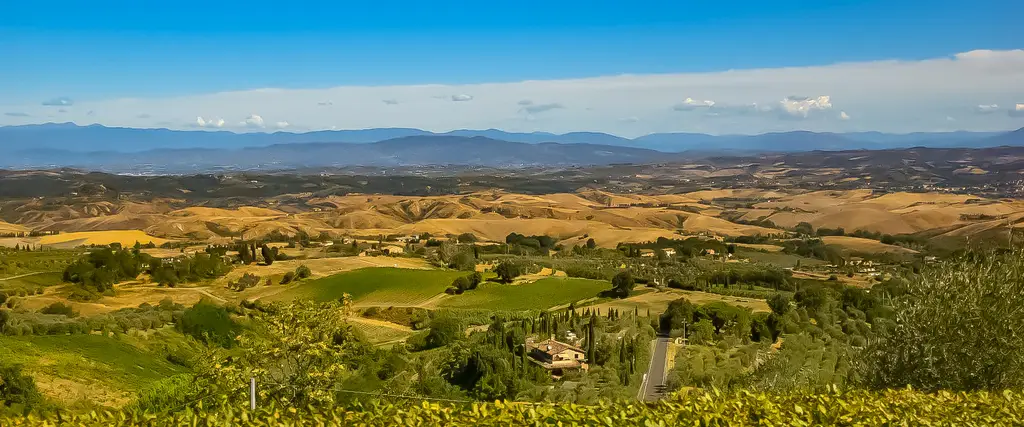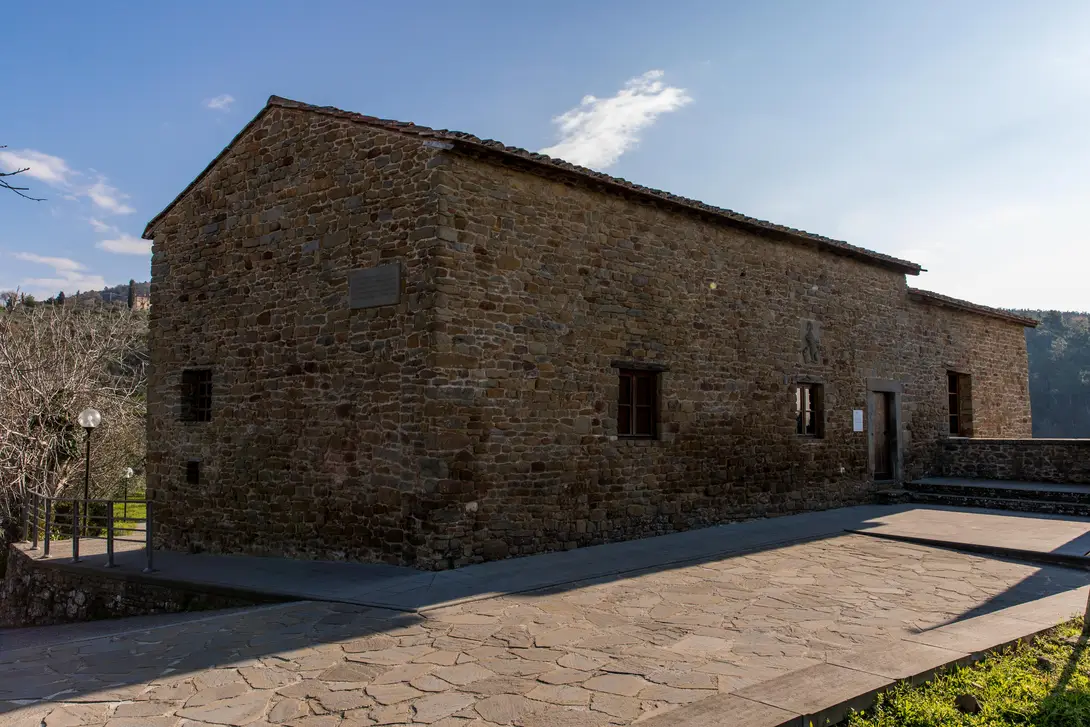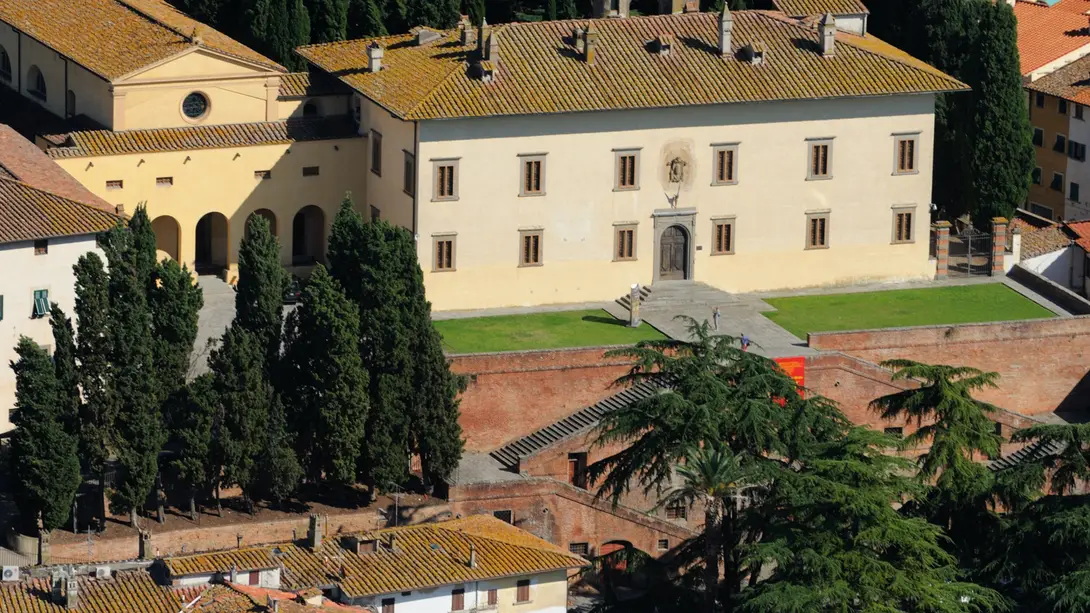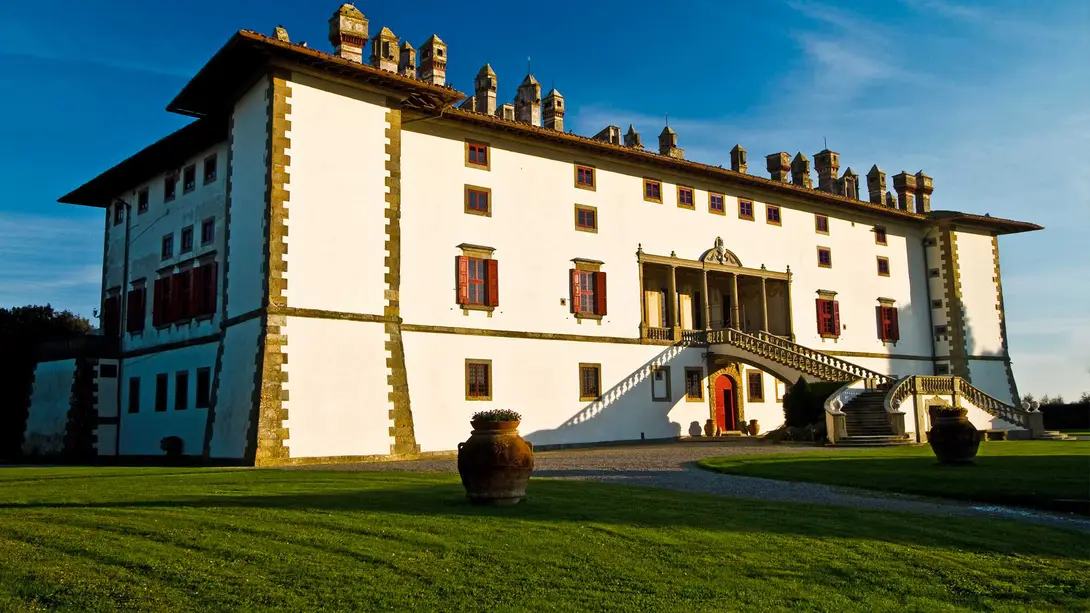
The Montalbano area
Made famous by the drawings of Leonardo da Vinci, the Montalbano is a region rich in hills cultivated with vines and olive trees, enriched by the expert human hand and situated between Florence, Pistoia and Prato.
This region, once a holiday destination and hunting ground of the Medici family, is now crossed by the Strada del vino e dell’olio del Montalbano (Montalbano Wine and Oil Road), an itinerary meant to promote PGI extra virgin olive oil and Montalbano labelled Chianti wine. Here trails and paths wind through villages, churches, historic villas and even the ruins of ancient mills. These routes are within everyone’s reach and you can explore them either on foot or by bicycle.
Vinci, Cerreto Guidi and Capraia e Limite are flanked by the Etruscan Trail, a hiking path which, from the Via Francigena in Fucecchio, allows to reach the town of Fiesole. Along the way, you will come across the Etruscan sites of Tomba dell’Uovo and Montereggi Park in Capraia e Limite. From Capraia e Limite starts also the Montalbano Ecotrail, which consists of two bike trails of 14 and 22 kilometres, respectively.
In the Vinci area, hiking trails are inspired by the personality of Leonardo: the Genius Trails, are five easy to follow trails that allow to discover the house where the most famous man of the Renaissance was born as well as the places where he spent his childhood, which were a source of inspiration for his works and studies.
All trails are clearly signposted: from the Strada Verde (the Green Road) to the Via dei Mulini (the Mill Road) till the Via di Caterina (named after Leonardo’s mother). Among these, it is the Via del Vincio trail, that connects the municipalities of Vinci, Cerreto Guidi and Fucecchio. Following the flow of the Vincio stream, the trail will take you from Vinci to the Padule di Fucecchio, connecting to the Via Francigena.
Vinci and Cerreto Guidi are crossed by the Via Medicea, a walking path that goes from Artimino, in the municipality of Carmignano, to Fucecchio, touching those places beloved by the Medici family and admiring some of the most beautiful Medici Villas in Tuscany. The itinerary, that runs through la Toscana nel Cuore, starts from Vinci and arrives in Fucecchio passing by the Medici Villa of Cerreto Guidi, a UNESCO heritage site.
It is right from this stunning villa that the Medici Rings Routes start. They consist of six ring trails inspired by the Grand Dukes of Tuscany, well signposted and suitable both on foot or by bicycle. They lead to the various hills surrounding the town, on the side of the Arno, Montalbano and Padule di Fucecchio, before returning to the historic centre.
Die Orte
Etappen
Tomba dell'Uovo (Tomb of the Egg)
The tomb probably dates back to the 6th century BC and features an ample tambour of about 25 metres in diameter, with an entrance and a podium. On the top of the tomb is an imposing egg-shaped stone, naturally formed, on which Etruscan letters are engraved.
Discovered in 2002, the tomb is located not far from the Etruscan village of Montereggi.
Archaeological park of Montereggi
The Etruscan settlement of Montereggi can be dated to between the 6th century and 1st century BC but the archaeological finds prove that there were settlements since the 12th-11th century BC.
In addition to tombs, large wall structures have also been discovered.
Today the site is freely accessible.
The archaeological finds unearthed during the various excavations, mostly ceramic material, are today housed in the Ceramic Museum of Montelupo Fiorentino
Leonardo's birthplace
In Leonardo’s birthplace in Anchiano, a cluster of houses about two kilometres from Vinci, there is a permanent exhibition. In the home, the audio-video narration Leonardo in Vinci: A Genius Tells His Story uses modern 3D technology to make Leonardo and his most personal, intimate, less-known universe alive again. The relationship between Leonardo and the Vinci and Montalbano areas, in particular, gains new life thanks to the several drawings that attest to Leonardo’s frequent visits to these places.
A life-size hologram, mixing video, theater and documentary, gives voice to an old and tired Leonardo who, from his last home in Amboise, looks back to the past to recount his relationships and studies, and the events that connected him to this land.
On the other hand, the interactive multimedia app Leonardo Touch presents the pictorial and graphic works of Leonardo, following several research itineraries to interact with the drawings and paintings, so as to discover every detail in them. In the adjacent farmhouse, the section dedicated to The Last Supper, Leonardo’s sole mural painting visible today, displays the HD digital reproduction of the work, a 1:2 scale model projected on a wall. The technology employed allows you to explore the painting through two research modalities, a movement and a touch screen one. It is possible to activate several thematic itineraries, such as the iconographic and historical-artistic ones, as well as one dedicated to restoration.
Villa Medicea di Cerreto Guidi
The Medici Villa of Cerreto Guidi is situated near the marshes of Fucecchio, which is rich in wildlife and was built by Cosimo Ide Medici as a hunting lodge. Work started in 1556 and the design with its two large bricks staircases - the so-called Ponti Medicei - is attributed to Buontalenti.
The villa contains furniture and portraits of medici notables from the 16th and 17th centuries and a series of 17th-century tapesties woven in the grand-ducal workshops. The Villa hosts the Historical Hunting and Territorial Museum, which partly occupies the rooms on the upper floor and is mainly dedicated to hunting and shooting weapons and anything related to them, during the period between the Middle Ages and the Modern Age.
Medici Villa di Artimino
Built in the XVI century by Bernardo Buontalenti for the grand duke Ferdinando de' Medici. It became the summer residence of the Medici family and was decorated with frescoes by Passignano and Bernardino Poccetti.
The famous lunette with the Medici Villas were painted by Iustus van Utens. In the ancient kitchen you can still admire the rotisserie designed by Leonardo da Vinci.


